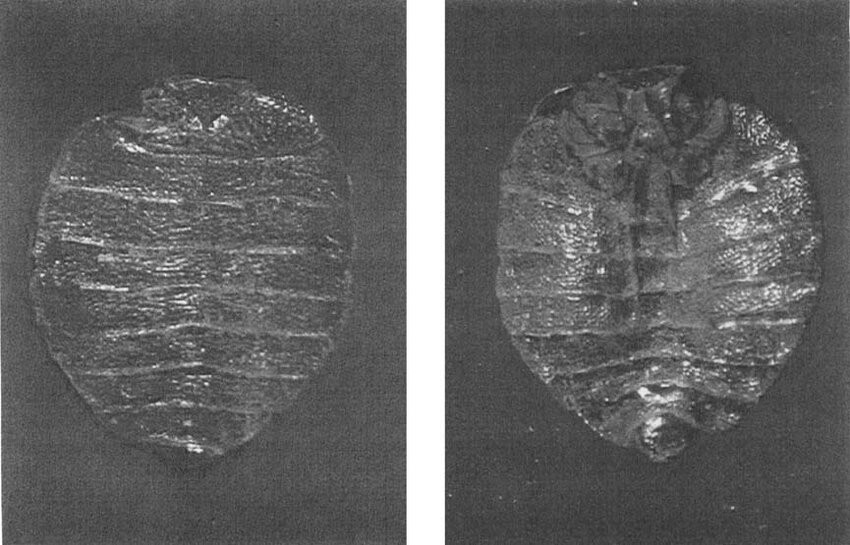“Don’t let the bed bugs bite” is one of the most popular phrases in modern society. Most of us have come across this phrase at one point or another and did not pay much attention to it. Bed bugs have been around for thousands of generations but the phrase has taken on a whole new significance recently. This is mainly due to the resurgence of bed bug infestations worldwide.
Chances that you or someone you know is dealing with a bed bug infestation are higher than ever. It is best to learn how to prevent bed bug infestations but first, you must understand where they come from. Here is everything you need to know about bed bugs’ origin and history.
Table of Contents
Where do bed bugs originate from?
Scientific explorations tend to generate more questions than answers when it comes to the origins of Bed bugs. It has long been assumed that these bugs originated from bats but a recent study shows that bed bugs evolved long before bats. In fact, the study suggests that bed bugs lived alongside dinosaurs, mighty creatures that walked the earth between 245 and 66 millions of years ago. Somehow, the bugs were able to survive the mass extinction event that wiped out the dinosaurs.
The first bed bugs originated as a species of Cimicidae, an assemblage of ferocious, blood-sucking insects . At present, we found bed bug fossils date back to over 3500 years ago. It is not clear whether the fossilized bed bugs fed on humans or bats.
Historians and entomology practitioners had first believed that bed bugs’ first host was bats in caves from the Middle East region. We now place their appearance at ~115 million years ago, thanks to a new fossil-calibrated phylogenetic analysis. Their first host might have been a large group of birds called Enantiornithes living during the Mesozoic period. Somehow, the bed bugs survived an extinction-level event and later jumped onto bats. This shows you how hard it is to get rid of them.
What is the recorded history of bed bugs?
Human encounters with bed bugs have been recorded across various civilizations. These bugs thrived and spread like wildfire across Europe, Asia and the rest of the world as civilizations continued to grow. Here is a comprehensive outline of various accounts of bed bugs in history;
The earliest mention of Bed bugs came in 400 BC in Ancient Greece. Surprisingly, the Greeks believed that these tiny, bothersome bugs had some medicinal value. In an article featured in the American Entomologist, Dr. Potter notes that Greek care givers used mashed bed bugs as;
- Treatment for snake bites
- Treatment for ear infections
- Treatment for fevers
- Deterrent against leaches when burned with sulfur
In Rome the first recorded sighting of bed bugs came in 77 AD. The Romans, like the Greeks, believed these pesky insects had some medicinal value. This belief continued until at least, the 18th century when Guettard suggested that they could be used as treatment for hysteria. Ancient records also note the presence of bed bugs in China as early as 600 AD.
There were hardly any mentions of bed bugs in the middle stages except in Germany and France. In Germany, bed bug reports started emerging in the 11th century. The French were spared the turmoil associated with these pestilent bugs for a while but eventually reports of their sightings emerged in the 13th century.
Sightings of bed bugs in England were first recorded in 1583. Historians believe that bed bug infestations in the Americas originated from England. These pesky bugs hitched rides on boats and ships used by English colonialists, explorers and settlers. According to colonial records, Canada and several other English colonies were facing severe bed bug infestations in the early 1800s. It is generally believed that railroads, hotels, and ships offered ideal accommodations for bed bugs.
How have bed bugs been treated throughout history?
Several methods of bed bug extermination have been implemented over the years. Some of the early methods of controlling and eliminating bed bug infestations are still applicable today. Others are, however, outlawed so much that you could end up in prison if you attempted to use them. The use of DDT is an excellent example of old treatment methods that are outlawed in modern society. Here are some bed bug treatment methods used throughout history;
Heat treatment
In the middle 1800s, the most common form of bed bug extermination was heat treatment. People had to boil water and pour them into joints and crevices to kill all the bugs residing in them. It is worth noting that both the poor and he the rich were afflicted by bed bug infestations during this time.
The rich, however, were able to deal with the infestations appropriately. This is mainly due to extensive housekeeping efforts that enabled them to detect infestations at an early, vulnerable stage. Early heat treatment methods were more effective at early stages of infestations compared to advanced stages.
In the US, bed bug infestations became a huge challenge during the World Wars. In World War 1, people primarily fought this pesky bugs using boiling water. At the time, there were few options for treatment of bed bugs. It is important to note that heat treatment is still a viable method of dealing with bed bug infestations today.
DDT (Dichloro-Diphenyl-Trichloroethane)
In the period between World War 2 and World war 1, advancements in chemistry facilitated the production of pesticides. These pesticides were instrumental in fighting bed bugs in World War 2. One of these pesticides was developed in the 1940s and named, DDT. Its primary purpose was to reduce malaria transmission and other insect-borne diseases. It, however, proved to be quite instrumental in the fight against bed bug infestations. Bed bugs almost became a thing of the past in the 1950s due to application of DDT and other pesticides.
The use of DDT was, however, cut short in 1972 owing to several health hazards associated with it. DDT and several other pesticides can cause various ailments including cancer. DDT is sometimes found in human breast milk. They also have several adverse effects on wildlife such as birds. Ultimately, it’s advisable to employ other effective, non-hazardous means of dealing with bed bugs.
It is important to note that bed bugs tend to develop resistance to pesticides. Some bed bugs were resistant to DDT by the 1940s. They have a mutation that allows them to survive DDT. Now the DDT-resistant strain is dominant.
Traditional methods including dusts, fungi and plant extracts
In the old days, civilizations in different parts of the world used different traditional methods to repel or kill bed bugs. It is important to note that some of the traditional used in the early days are still applicable today. Some of them include the use of fungi and the use of plant extracts including black pepper, Eucalyptus Saligna oil, and tobacco.
For thousands of years, dusts and certain types of soil have also come in handy. Some of the dusts used include lime, dolomite, and diatomaceous earth. Recently, diatomaceous earth was revived a non-hazardous, residual pesticide.
When did the bed bug resurgence kick-off?
New technologies and more effective pesticides led to the disappearance of bed bugs from the 1950s to the 1990s, at least, in the developed world. The world has, sadly, witnessed a resurgence of bed bugs over the last 20 years. This resurgence is attributed to several factors including;
- Increased travel: In today’s society, more people tend to travel from place to place for business engagements or leisure activities. During their travels they visit high risk spaces such as hotels but lack knowledge on preventive measures. Bed bugs are excellent hitchhikers. They can crawl onto your belongings and hitch a ride to your home.
- Ignorance and lack of vigilance: After a long time without bed bugs, there were fewer reasons to remain vigilant. Most people do not know the signs of bed bug infestations or how to check for them. Such ignorance has enabled bed bug populations to recover and multiply.
- A rise in the use of second hand items: Thrift stores, charity shops, antique stores, and garage sales are currently the order of the day. Second hand items sold in such places tend to fuel the spread of bed bug infestations. Most people do not think twice about purchasing second hand items even though they increase the chances of an infestation.
What is the state of the bed bug problem today?
Today, bed bugs can be found all across the United States of America and the rest of the world. They still exhibit the same tendencies that they were known for thousands of years ago. Some of these tendencies include, hiding in tiny cracks and crevices and feeding on human blood. Bed bugs have several negative effects in peoples’ daily lives even though they do not transmit diseases. Bed bug bites can cause;
- Skin rashes
- Itching on the skin
- Allergic reactions for some people
Final thoughts
‘History is the best teacher’, is one of the most popular phrases in modern society. If the history of bed bugs is anything to go buy, these pesky critters are going to be around for a long time. It is wise to invest in expert guides on how to repel or deal with bed bugs in your daily life. I can assure you that Townhustle.com is your best bet when it comes to issues of bed bugs and how to deal with them.


